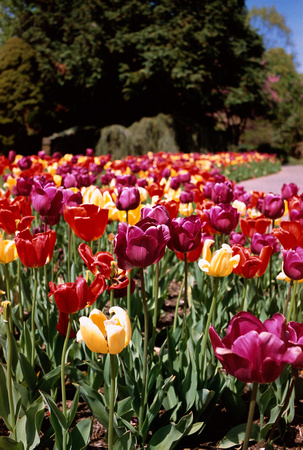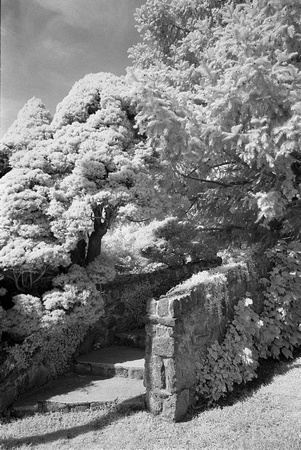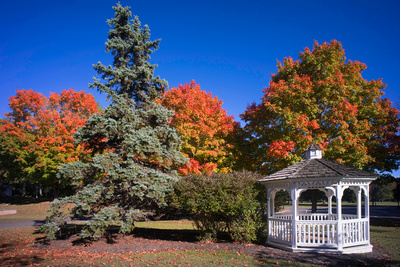Welcome to my Photo Blog!
Leica 21/2.8 Elmarit-M pre-ASPH Lens Review
21 mm Focal length is a bit untypical for a Leica M lens since the largest frame line of the M camera rangefinder system is 28 mm. To use a wider lens than 28 mm on a Leica M camera, an external viewfinder (either optical or electronic) is required. For this purpose, I am using on my film M cameras the round metal optical hot-shoe based viewfinder from Voigtlander which comes with 21 and 25 mm frame lines. It is small but very clear and easy to transport. On my digital Leica M-E 240 camera, I often shoot with 21 mm lenses using my external Olympus VF-2 electronic viewfinder.
The Leica 21/2.8 Elmarit-M lens line is no longer produced by Leica. There are not many reviews written about the pre-ASPH version of this lens - it is similar to my earlier blog review of the Leica 28/2.8 vers. IV a hidden gem in the Leica lens line. It was only succeeded by Leica's 21/2.8 Elmarit-M ASPH version produced from 1997 until 2011. At this point, Leica only makes the very expensive and much more bulky f/1.4 lens in the same focal length. The Leica 21/2.8 Elmarit-M was manufactured from 1980 to 1997 with my copy made 1989 in Canada. During this time, the lens only changed its minimum focus distance (MFD) going from originally 0.3 m to 0.7 m to fit the rangefinder MFD - plus the filter size changed from originally E49 to E60 (it later went back to E55 in the ASPH version). I bought my 21/2.8 Elmarit-M lens version as mint used lens copy ($1235) and purchased afterwards additionally the quite unique fitting E60 hood ($230). This hood has metal clips to fix it into position outside the front part of the lens. It also allows to be mounted vice-versa on the lens for easier transport and storage. The hood has become a collector item since it is no longer easy to get.
I often shoot ultra-wide in focal length, and I used for many years the faster and heavier Voigtlander 21/1.8 Ultron-M lens. Stopped down, there is no easily noticeable difference between both lenses - but the big advantage of having in addition the Leica 21/2.8 M-lens is its lighter weight of 290 grams and much smaller size.
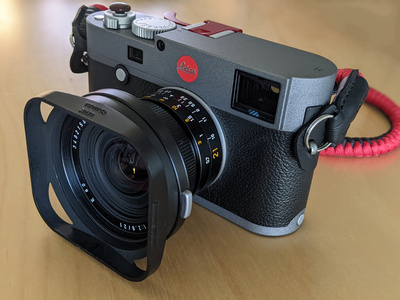

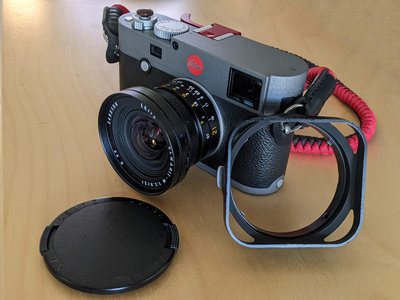

Left: Leica 21/2.8 Elmarit-M E60 lens with hood and attached to Leica M-E 240 camera; Right: Lens with separate lens hood and lens cap
The lens is sharpest between f/4.0 and f/5.6. It only has slight vignetting wide open at f/2.8 - similar even in the successor ASPH version. Personally, I don't object a bit vignetting in ultra-wide lenses especially when taking photos wide open - it provides a bit of a vintage look focusing the viewer's eyes towards the center of the image. Contrast and sharpness of the 21/2.8 Elmarit-M lens are very good - the later ASPH version is slightly better corrected to provide a notch better contrast towards the corners of the frame. I have not seen any issue regarding contrast nor loss of sharpness with this earlier lens version either. Regarding size, weight, built, and optical quality it is a great deal for a Leica-M lens when you have an opportunity to get hold of one. It is also a pretty cool looking lens with its very wide E60 lens hood attached.
I have used this lens predominantly for landscape and architecture photography. The Elmarit version f/2.8 lens speed is no culprit here since most often I shoot between f/8 and f/11 anyway. Images are very sharp and rich in detail - the lens works both very well on my film M cameras as well as on my digital M. As always with any kind of untra-wide lens, it is beneficial to use leading lines and foreground elements to compose the photo scene well.
Pros:
+ Price/quality ratio
+ Very well built, rigid feel
+ Contrast and sharpness already wide open at f/2.8
+ No flare issues with hood attached
+ Well sitting E60 lens hood and hood cap
+ Forms nice looking 8-blade sun stars at f/8 and f/11
Cons:
- Larger filter size of 60 mm making it impossible to use smaller rangefinder filters
- Not the fastest lens - make sure f/2.8 is sufficient for your shooting style
- Slight vignetting in the corners at f/2.8
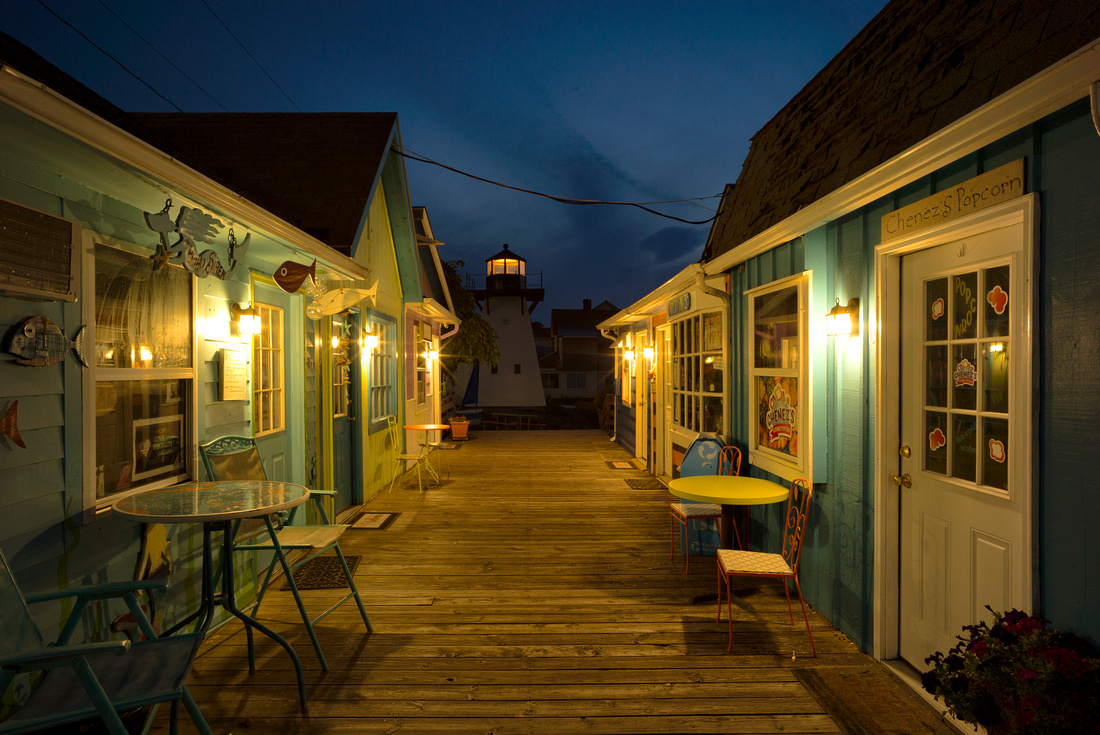

Top: Digital photo taken with Leica 21/2.8 Elmarit-M lens at f/8.0, ISO 400
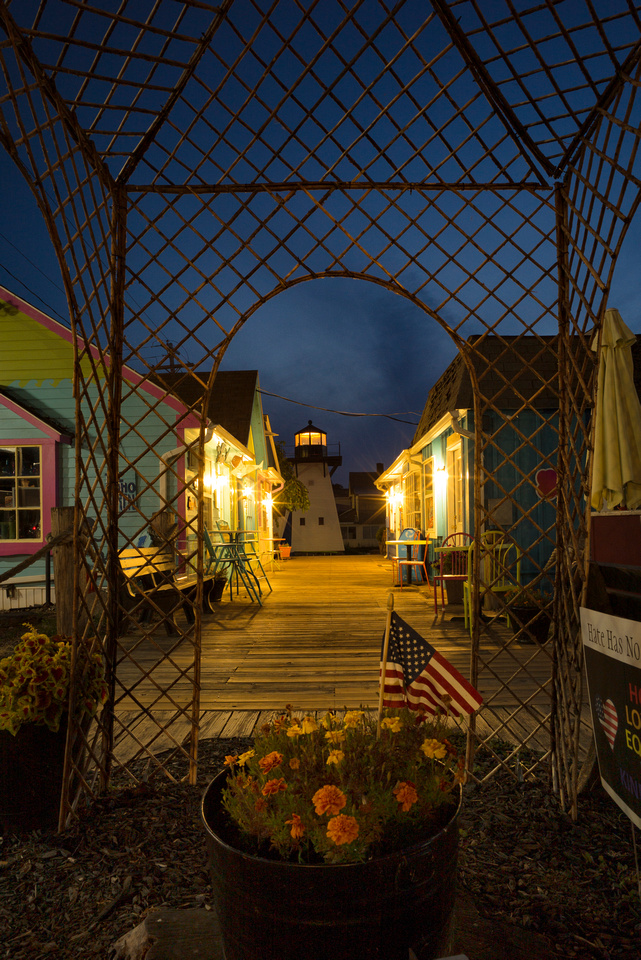

Top: Digital photo taken with Leica 21/2.8 Elmarit-M lens at f/8.0, ISO 400. This time the photo was taken in portrait frame and using foreground elements.
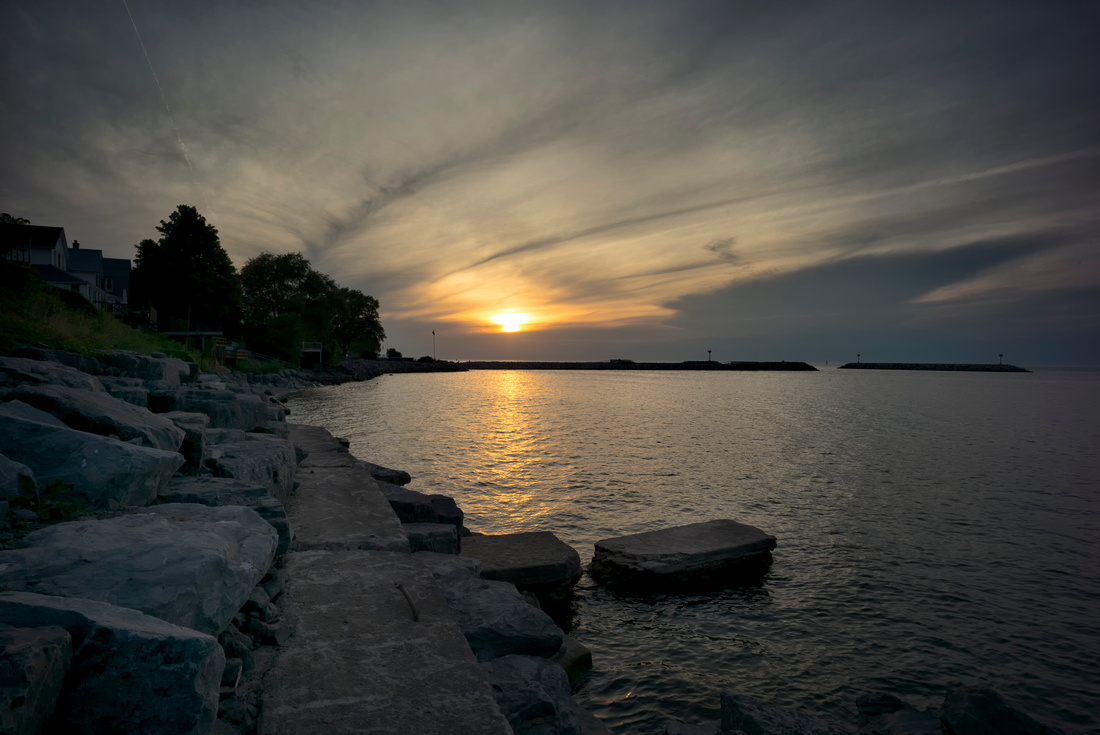

Top: Digital photo taken with Leica 21/2.8 Elmarit-M lens at f/11, ISO 200

Top: Film photo taken with Leica 21/2.8 Elmarit-M lens at f/11.0, ISO 125. The sun star appears in the sun itself here.

Top: Film photo taken with Leica 21/2.8 Elmarit-M lens at f/2.8, ISO 125.
Leica 28/2.8 Elmarit-M Version IV Lens Review
Wide angle 28 mm M-lenses are less commonly used with rangefinder Leica M-cameras since they fill out the whole viewfinder frame window leaving very little space between frame lines and viewfinder border. But the 28 mm full-frame field of view can provide an advantage over the bit longer and more standard 35 mm focal length. Faster 28 mm wide angle lenses with the Leica brand name are very expensive, but Leica 28 mm f/2.8 lenses exist in a wider variety and are most often more than sufficient regarding depth of field and sharpness. It takes some effort to gig through available Leica 28/2.8 lens versions and figuring out pros and cons of each and how newer lens versions improved over older ones. The newer Leica 28/2.8 Elmarit-M versions are aspherically corrected ones and are named ASPH lenses. They ensure optimized sharpness with lower refractions towards the corners of the frame, are more compact but also the most pricey ones. From experience I prefer a bit more vintage M-lenses which Leica made in the 80s and 90s - they often have a unique rendering and still give excellent sharpness with digital M-camera sensors. Benefit with these kind of lenses is a much better price/quality ratio when getting a decent deal for a mint looking used lens copy. I was lucky years ago getting the Leica 25/2.0 Summicron-M version IV pre-ASPH lens made in 1991 (also nicknamed bokeh-king) which is a joy to use. Recently I found a great copy of a Leica 28/2.8 Elmarit-M version IV pre-ASPH lens made in 1996 for a decent deal. It's not a collector lens, but I read that it has become difficult at this point to find good copies of this specific lens version also including the unique hood Leica sold in combination with this lens version. Prices for this lens range around $1800-1900 depending on condition and accessories like lens hood, lens pouch and original box, and I bargained it down for a bit less than this (my copy did not come with original lens pouch and box but with the original hood and caps). I expect the value of this lens to increase in years to come since the market is already thinned out to find this lens version easily.
The Leica 28/2.8 Elmarit-M version IV lens is barely mentioned in online reviews - most reviews focus on its direct Leica ASPH successor lens version instead which is better known. This lens was focused to be used on Leica M film cameras which was also the usage of the first owner who sold me the lens. I instantly tested this lens on my digital Leica M-E 240 camera, and I can already tell upfront that it falls nothing short of being perfect with the digital sensor, too. There is no corner unsharpness, severe vignetting, nor color aberration seen wide open at f/2.8 which can potentially be an issue with older wide angle rangefinder lenses. This lens has its maximum of sharpness at f/4.0 and keeps it the same at smaller apertures. Smaller aperture only changes the depth of field but doesn't improve sharpness! Typical for a Leica Elmarit-M lens, it provides excellent contrast already at f/2.8.
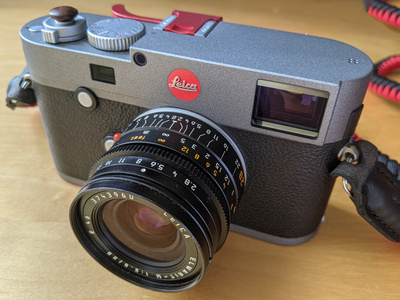

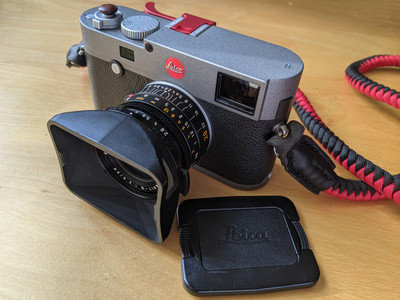

Left: Leica 28/2.8 Elmarit-M E46 lens version IV without hood attached to Leica M-E 240 camera; Right: Lens with lens hood and lens cap
I also have the smaller but also very good Cosina-Voigtlander 28/2.0 Ultron ASPH M-mount lens version I which is more modern than this Leica 28/2.8 lens. I bought this lens several years ago for $450 used in mint condition. The Voigtlandner lens is a stop faster but has approximately the same lens size and also 46 mm filter diameter. Wide open it shows more vignetting and lower contrast than this 28 mm Elmarit-M lens at f/2.8. Stopped down, the Voigtlander lens performance is then very similar in quality, but differences in the image background blur remain.
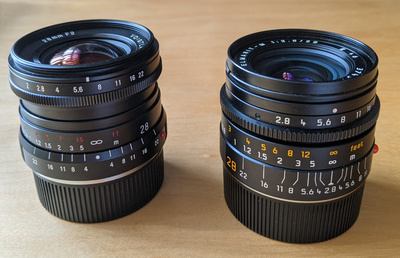

Left: Cosina-Voigtlander 28/2.0 Ultron-M lens version I; Right: Leica 28/2.8 Elmarit-M E46 lens version IV. Both lenses have about the same size. The Voigtlander lens has a protruded convex front lens element. Both lenses have 46 mm filter diameter size and weigh the same (253 grams without hood).
The 28/2.8 Elmarit-M E46 lens comes only in anoidized black finish. No chrome version exists to my knowledge. This lens is described as being as good as the 28/2.0 Summicron ASPH version I which makes the Elmarit an excellent bargain. The MFT carts of both Leica lenses look very similar in performance just that the Summicron version is obviously one stop faster at f/2.0 than the Elmarit. The lens I describe in this review is also called Leica 28/2.8 E46 lens due to its version-specific lens diameter size of 46 mm. It originally comes with the fitting Leica lens shade #12547 including the clip-on Leica cap #14013 (made of thick rigid plastic!). Both - lens hood and shade together - go now online for about $200. This plastic cap sits well on the hood and doesn't fall easily off like other Leica lens hood caps tend to do - for example the flimsy one on the earlier mentioned Leica 35/2.0 Summicron-M version IV lens hood which I nearly lost twice. The lens shade/hood of the 28/2.8 clamps with click on the outside of the M-lens easily and sits tightly. It has an opening in the upper corner allowing to look through when composing through the viewfinder of a Leica M rangefinder camera. Even this hood appears bulky on my first impression, I got very quickly used to it. There is still some lower right corner blockage of the viewfinder from the front of the lens but practically I didn't see it as a problem when composing my 28 mm shots. I always have used this lens with its hood attached and have never observed any kind of flare issue so far.
The aperture ring is a riffled full ring and has click-stops. Apertures range from f/2.8 to f/22 in half stops. When moving this ring, the finger can easily hit the attached rim of the attached lens hood - there is not much distance between them. Focus ring comes with standard Leica focus tab ranging from 0.7 meters to infinity focus. Scale is both in meter (white color) and feet (yellow color). The focus ring moves below the 0.7 meter mark with its hard end stop which is important to remember since it might offset the minimum distance focusing with the rangefinder patch focus. There is a hard stop set correctly at infinity. Make sure to have it set at the 0.7 meter mark and not below for minimum focus distance with rangefinder focusing - not an issue with LiveView or EVF attached on digital M cameras.
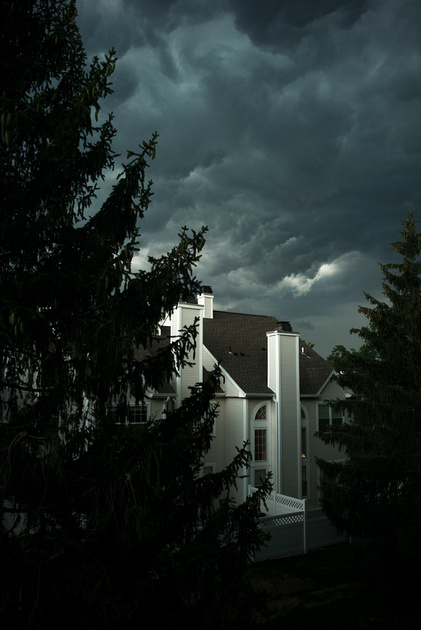

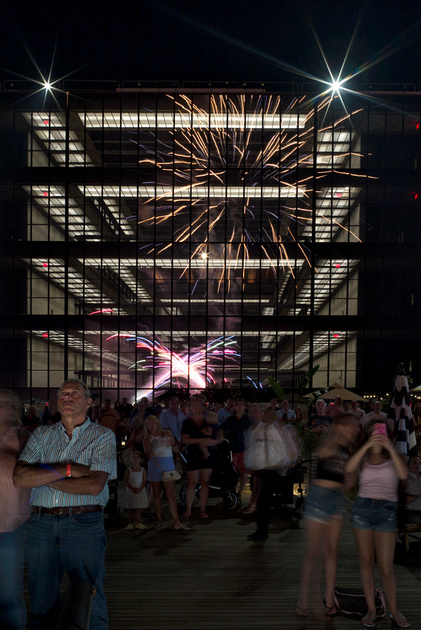

Both photos taken with Leica 28/2.8 Elmarit-M version IV lens at f/8.0. The left handheld at 1/45 sec (ISO 400), the right photo with tripod camera support at 1 sec (ISO 200).
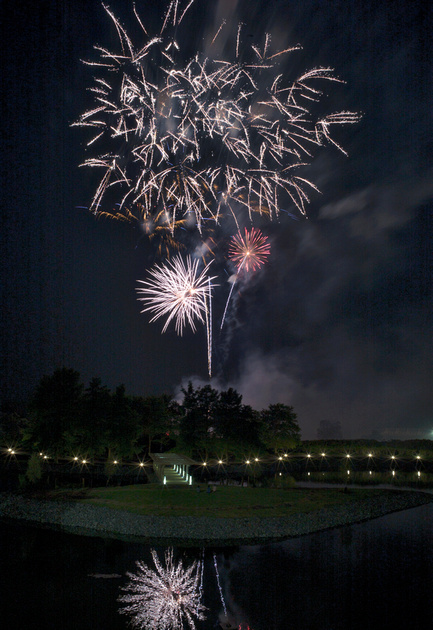

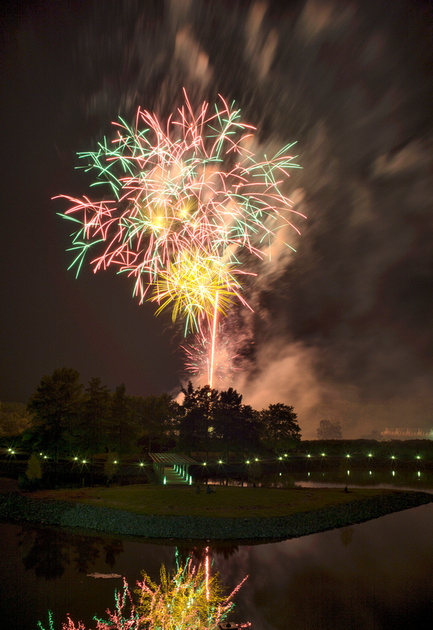

Fireworks photos taken with Leica 28/2.8 Elmarit-M version IV lens at f/8.0 and 2 sec exposure time at ISO 200.
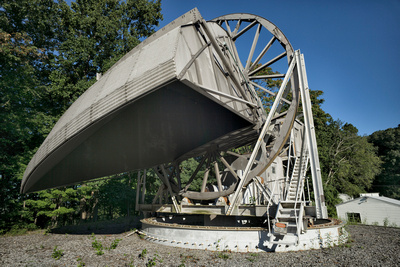


Holmdel Horn antenna (left, f/8.0) and sunset (right, f/4.0) taken with Leica 28/2.8 Elmarit-M version IV lens.
A direct comparison of Cosina-Voigtlander 28/2.0 Ultron and the Leica 28/2.8 Elmarit version IV lenses is shown in the photos below. Both photos were taken with camera mounted on tripod at f/8.0 and with circular polarizer in the same position. Sharpness and contrast-wise, both lenses perform exactly the same. But the Leica 28/2.8 Elmarit lens is a tiny bit wider on its wide end compared to the Voigtlander 28/2.0 Ultron. It is visible in the position of the end of the tree branch in the upper left corner of the frame. The Leica lens hood does not fit well over the third party circular polarizer 46 mm filter - I attached it loosely on the filter to give at least the flare protection without sacrificing image quality. No problem with this filter on the CV 28/2.0 Ultron lens - the thin screw-in lens hood fitted around it perfectly.
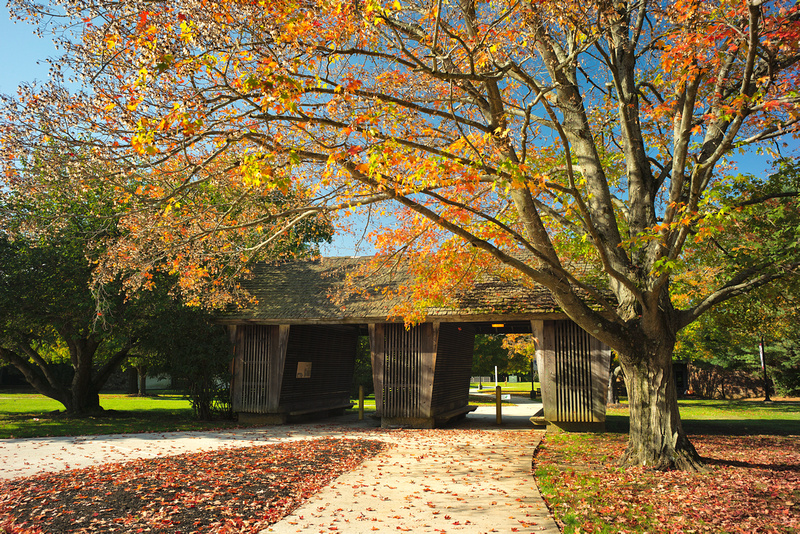

Top: Photo taken with Leica 28/2.8 Elmarit-M version IV lens and circular polarizer at f/8.0, ISO 400
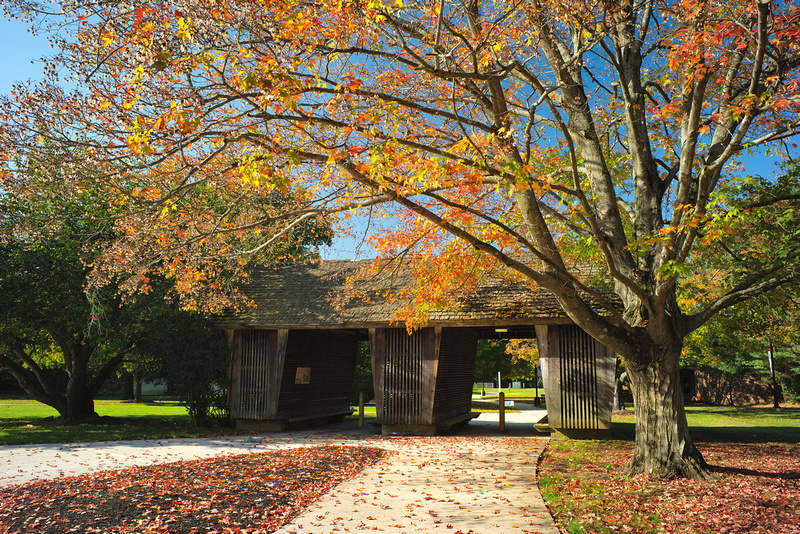

Top: Photo taken with Cosina-Voigtlander 28/2.0 Ultron Version I M-lens and circular polarizer at f/8.0, ISO 400
Pros:
+ Price/quality ratio (bit of hidden gem in Leica's lens line)
+ Very well built, rigid feel
+ Contrast and sharpness already wide open at f/2.8
+ No flare issues
+ Well sitting lens hood and hood cap
+ Forms beautiful 8-blade sun stars
Cons:
- Less compact than other Leica 28/2.8 lens versions
- Larger protruding lens hood
- Tiny space between aperture ring and attached lens hood
- No hard stop at minimum focus distance of 0.7 meters
- Lens hood does not fit well over third party 46 mm filters
- Hard to find as used lens currently
Voigtlander 75 mm f/1.5 M-Mount Lens Review
Cosina released in 2019 the Voigtlander 75 mm f/1.5 Nokton aspherical lens as addition to its Voigtlander's vintage line. Cosina has really stepped up the game with their more budget-friendly but high quality M-lens line providing suitable alternatives to much more expensive Leica counterparts. Obviously one lens won't mimic exactly the same look as the other, but for the most part a less expensive Voigtlander lens will do its job just fine for all what is needed. I am using several Voigtlander M lenses on my Leica M rangefinder cameras since many years to complement my Leica lenses, and I have been always been happy with them. Since I only had one suitable tele M lens suitable to be used both on digital and film - my Leica 90/2.8 Elmarit version I lens - I was curious to test this new Voigtlander 75 mm Nokton lens to fill the focal length bracket between 50 and 90 mm. I read and watched a couple of YouTube video reviews showcasing this lens, and in May 2021 I purchased this lens in new condition from Camera Quest for $900. The lens is available in both black and silver versions for the same price. In the past I had some trouble with the black paint on other Voigtlander lenses because it tends to come off quite easily at focus rings and focus tabs. This was one reason why I decided to go with the silver version here to avoid the black paint issue. Second reason is that the silver version complemented well to my Leica M3 and the anthracite look of my M-E 240.
What's in the Box:
The lens comes in a quite typical Voigtlander lens box with styrofoam padding. Inside are both the lens and the lens hood separately in plastic bags. As usual, Voigtlander does not provide a lens pouch for the lens which would have been a nice-to-have here regarding the value of this fast lens. A very crude lens information card is supplied in the lens box lacking any kind of specific technical details of the lens built. No warranty card was included. But at least Cosina finally included the lens hood in the package which was always a complaint in the past with other CV lenses that the hood was sold separately for quite an expensive amount, or that the hood was fixed on the lens which limited usage of filters to the exact filter diameter of the lens.
Lens Built:
First, some technical specs of the lens: the lens weights only about 350 grams, has 7 lens elements in 6 lens groups including one aspherical lens element. It has 12 aperture blades to allow for smooth circular and oval bokeh circles.
The lens built is excellent and fits to the style of other well built Voigtlander lenses: all metal with clear and precise distance and aperture scales. The scales are in black on my silver lens version and very easy to read. The distance metering scale is very accurate to focus between 0.7 and 5 meters. Between 5 meters and infinity the focus turn is very short, so here you need to be careful to turn just the right amount for getting the focus wide open correctly. No focus tab is supplied with this lens which is not needed either in my opinion since the focus ring is wide enough itself. The aperture ring does half-stop clicks between f/1.5 and f/16. The distance between each aperture stop is equal throughout the aperture range which I prefer to have.
The lens hood with black paint inside has no thread itself but is placed instead with lock screw onto a black plastic-coated metal ring. This ring is screwed into the lens filter thread. Unfortunately this black lens hood attachment ring does not fit well to the rest of the silver lens design - I wish it would just be a silver metal ring fitting the rest of the silver lens design. With the black lens version, this is no issue at all obviously. Any kind of standard 58 mm filter can be placed inside this hood ring before the hood is attached. If no hood is needed, the filter can be directly placed into the lens thread instead of the hood ring. The black plastic Voigtlander lens cap sits either directly on the lens, on any attached filter, or on the hood ring. The dual lens cap clamps make the cap sit well on either of them.
With the attached lens hood, the rangefinder camera's viewfinder blockage is about 15% in the lower right corner of the 75 mm frame lines with about 0.7x viewfinder magnification. When the lens is attached to the Leica M3 with 50, 90, and 135 mm frame lines available, only the 50 mm frame lines are shown. Best is to manually move the M3's frame line level to 90 mm to compose then in between the visible 50 and 90 mm frame lines to estimate 75 mm focal length.
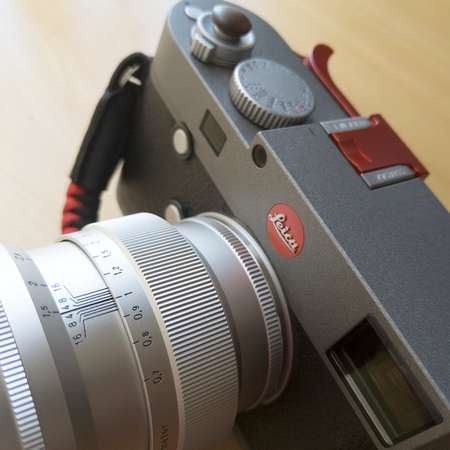

Leica M-E 240 with silver version of the Voigtlander 75/1.5 Nokton lens. The engraved black scales accentuate well on the silver built.
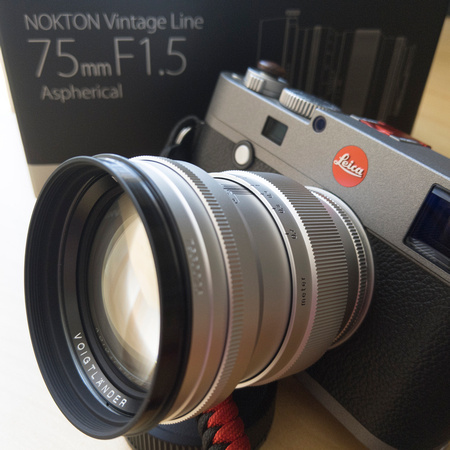

The removable black hood ring with 58 mm filter thread does not fit well to the silver lens design. It will be fully hidden when the silver lens hood is attached though. The original lens box is shown in the background.


Leica M3 with silver version of the Voigtlander 75/1.5 Nokton lens attached. Compare the look of the lens without black hood ring in the former image!
Lens Focus:
This lens uses two kind of ways to focus: Between 0.7 and 5 meters focusing is very precise with the focus ring which is ideal for portraits. With 0.68x to 0.72x rangefinder patch magnification, focusing wide open at f/1.5 can be challenging. You might need to take a few shots with slight change in focus to have one with best focus, or you use LiveView or external EVF with magnification tool to adjust the focus. Alternatively, the Leica 1.4x viewfinder magnifier will help for rangefinder focusing for sure here. Between 5 meters and infinity the lens focus turn is very short and might be difficult to allow precise focus in this distance range.
For minimum focus distance (MFD) at 0.7 meters, the lens can be a bit tricky: the focus actually turns a bit closer than 0.7 meters which will lead to misfocus with the rangefinder which is limited to 0.7 meters (like the M 240 for example - it is only 1 meter with the Leica M3!). I always need to remind myself to set the distance scale first to exactly 0.7 meters for close-up shots and then adjust my distance to the subject accordingly to focus with the rangefinder. This is common with Voigtlander lenses, some I have go even further down in focus distance like my CV 35/1.2 II which has a MFD of 0.5 meters. It's a no-brainer when the focus is taken with EVF or LiveView because the limitation to 0.7 meters doesn't play a role here.
When taking some photos at MFD of 0.7 meters, the lower left corner of the rangefinder focus window shows a bright silver reflection in my M-E 240 camera which derives from reflected sun on the silver lens hood. It is like a reverse viewfinder corner blockage just this time within the focus patch window. I am still able to focus but the silver corner patch blockage is something I didn't observe before. By removing the lens hood, this blockage disappeared (therefore I was able to exclude any camera issue). Also the issue isn't seen at longer focus distance above 0.7 meters. Not sure if the same occurs with the black lens hood.
I did not see any focus shift when the lens is stopped down.
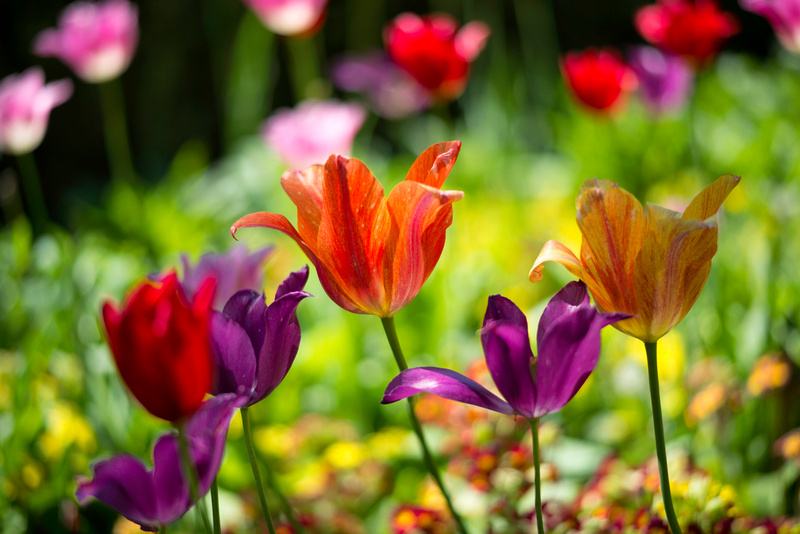

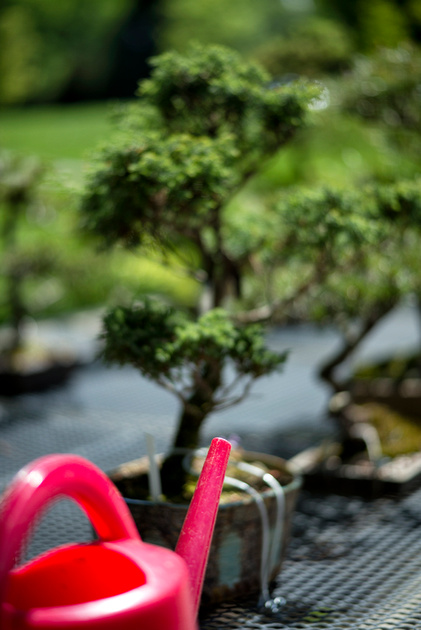

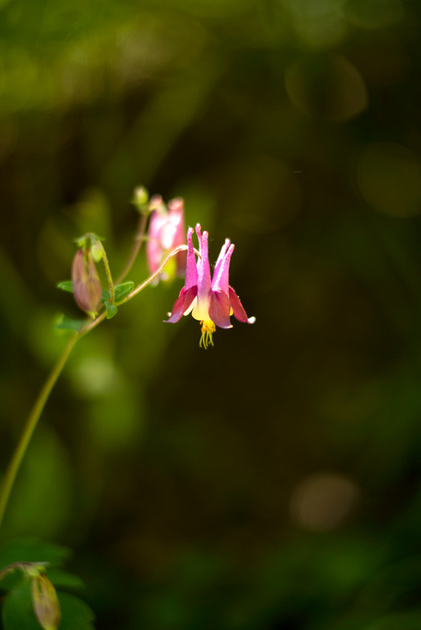

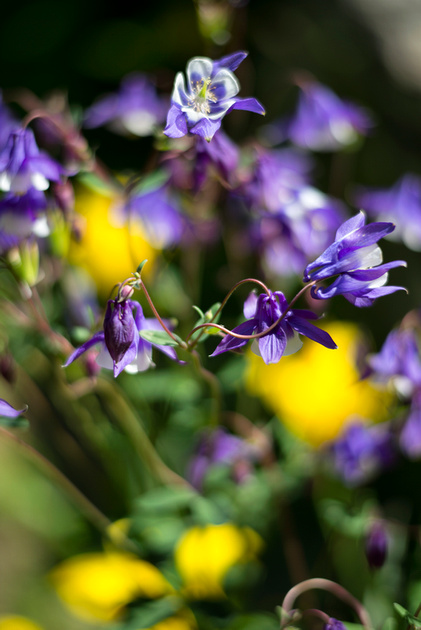

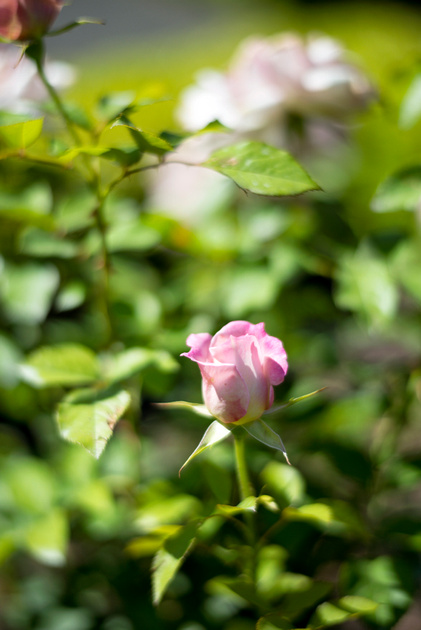

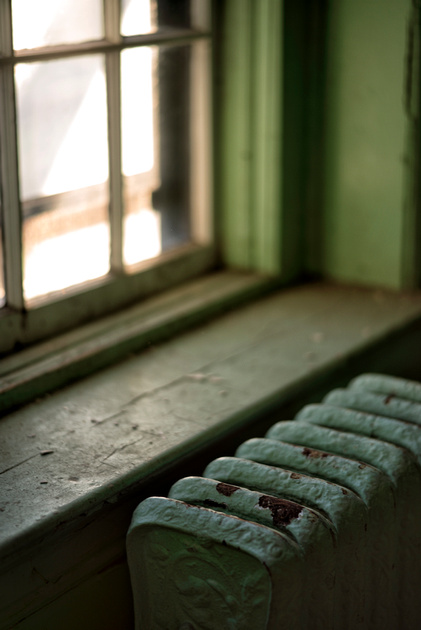

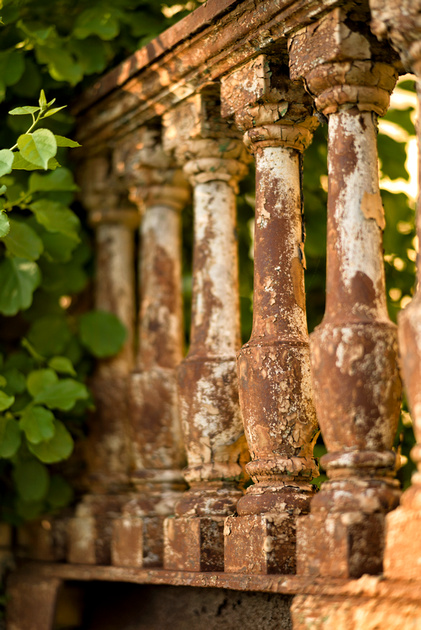

Photos taken with Leica M-E 240 and Voigtlander 75/1.5 Nokton lens wide open at f/1.5. For the first five photos a 3-stop ND filter was used to accomplish f/1.5 at available shutter speeds. Focus was done with the 0.68x rangefinder.
Bokeh, Bokeh and Image Quality:
Main reason to get such fast short tele lens is to shoot wide(r) open to achieve beautiful out-of-focus blur this lens is known to deliver. I can only confirm this property from my experience sop far - I love the smooth bokeh available between f/1.5 and f/2.8. The bokeh circles tend to be more oval towards the borders and corners of the frame leading sometimes to a smooth circular bokeh pattern in the background. This circular bokeh is by far not as obvious as in my vintage Leica 50/2 Summitar lens, but it definitely adds to the vintage look achievable with this 75/1.5 lens. Image quality is superb - this lens combines well modern sharp lens properties with good micro contrast and vintage looking depth-of field. I did not observe much of chromatic aberrations wide open which is likely mostly avoided due to the aspherical lens element. The lens doesn't seem to flare much with the hood attached - shooting against the sun wide open can cause some purple flares. There is some slight corner vignetting at f/1.5 which I actually like for many of my wide open compositions. Stopping down the lens a bit will reduce the vignetting significantly.
At f/8.0, the Voigtlander 75/1.5 Nokton lens astonishes with excellent sharpness throughout the frame without any vignetting in the corners of the frame. Color rendition is typical for Voigtlander lenses providing a warmer look and rendering. The lens achieves excellent sharpness beginning at f/2.8. Wider open, the lens has more classic rendering qualities compromising between modern sharpness look and vintage rendering.
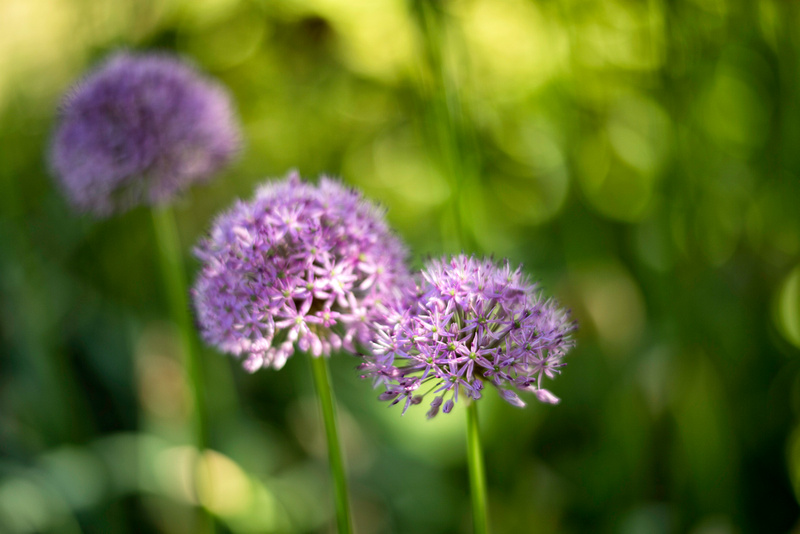

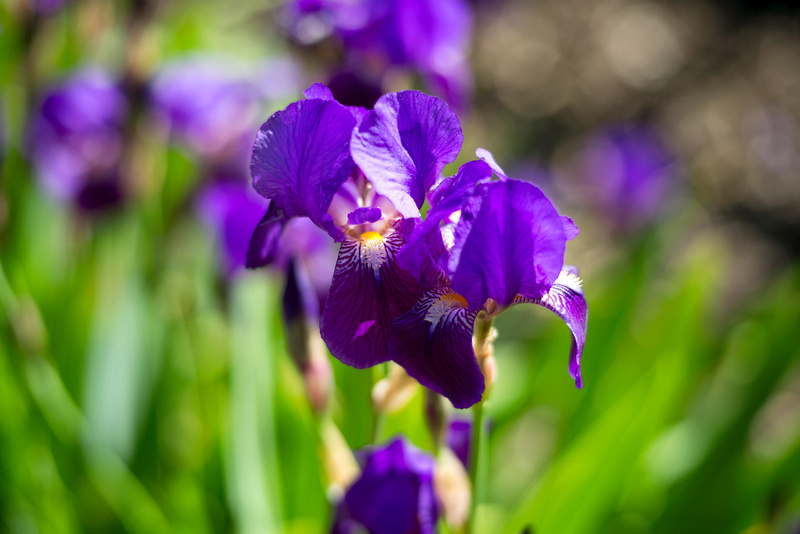

Photos taken with Leica M-E 240 and Voigtlander 75/1.5 Nokton lens at f/2.0 (top) and f/2.8 (bottom). Painterly bokeh with beautiful depth of field transition even when stopped down a bit.
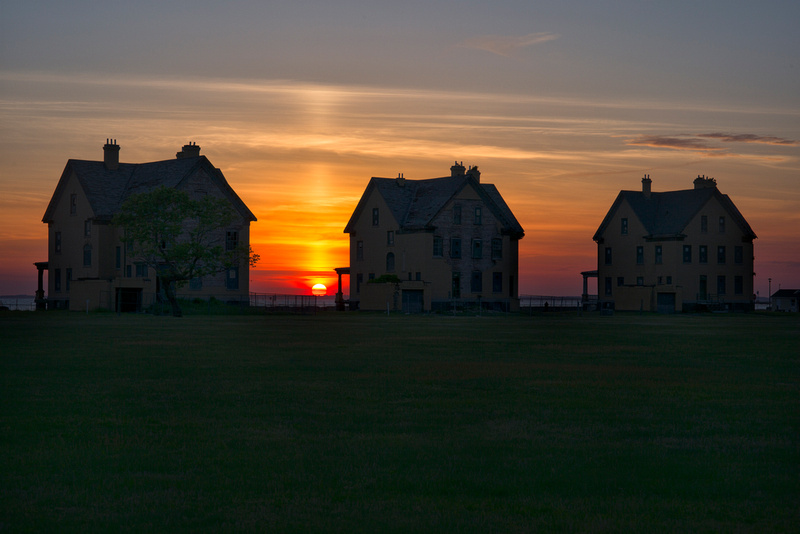

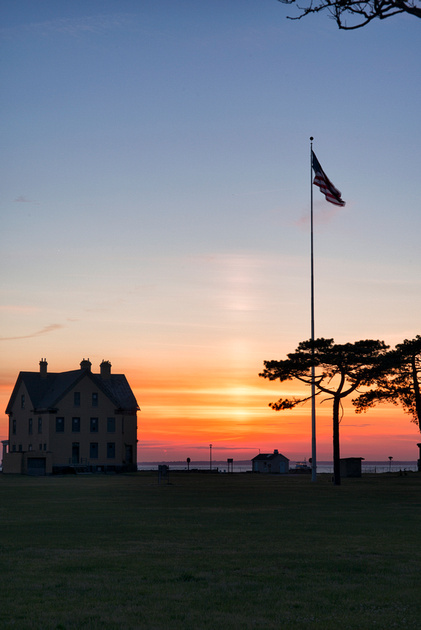

Sunset photos taken with Leica M-E 240 and Voigtlander 75/1.5 Nokton lens at f/8.0
Lens Competitors closest in Price:
No longer made, the Leica 75/2.4 Summarit lens is a suitable competitor to this Voigtlander lens (the f/2.5 version is not as good in performance as the newer f/2.4 version which is also represented by the prices they are going for). About $1500 more expensive in the current used market, the f/2.4 Summarit lens has supposed to have more micro contrast wide open making it feel more like a f/2.0 lens.
Also the Leica 75/1.4 classic Summilux lens no longer in production comes very close in performance to the Voigtlander 75/1.5 lens. But it costs at least about 4x as much.
The 7Artisans 75/1.25 lens is the cheapest alternative in the bundle but does not achieve the optical image qualities of the CV 75/1.5 lens. Other test reviews state it is less well corrected optically and less sharp; also it is much bigger and heavier. Its bokeh wide open might be a good alternative though.
Below my summary with pros and cons which I experienced with this lens so far. Overall a great value for the price and likely one of the best Voigtlander M Nokton lenses available.
Pros:
+ Very well balanced lens when mounted on camera
+ Sharp wide open in the center with correct focus applied
+ Amazing and smooth bokeh
+ Bokeh circles can in specific situations lead to some vintage-like circular background rendering
+ Smooth focus ring which allows precise focusing between 0.7 and 5 meters.
+ Excellent built
+ Combines modern lens characteristics with vintage lens properties
+ Comes with removable hood in vintage look
+ Available in two color versions (black and silver) for the same price tag
Cons:
- Thin lens rim to attach and detach the lens on and from the camera (you can easily turn the focus ring instead!)
- Too thin red line to mount lens on camera (better visible red dot on the lens mount side would have been better)
- Very short focus turn for distances between 5 meters and infinity making it hard to focus correctly in this range
- Weird lens hood reflection in lower left corner of rangefinder patch in sunlight at MFD with silver lens hood
- Lens allows a bit shorter than 0.7 meters MFD which can easily lead to misfocus with rangefinder focusing when not keeping the lens exactly at the 0.7 meter distance scale set point.
- No lens pouch supplied and no details on the lens info card about lens built or specifics.
- Black lens hood ring does not fit well optically to the rest of the silver lens design
Battle of the Titans: When to Use Film Or Digital with 35 mm Format
If you are fortunate enough to have at least one film and one digital camera, and you feel comfortable shooting with either medium, then sooner or later you might ask yourself: do I take my film or digital camera today - or maybe both? I found myself struggling with the question very often - important enough regarding decision-making that I decided to write in my blog about it. This is also meant to be a guide which medium - film or digital - to select depending on expected circumstances while taking photos later.
1. Weather and Time
This is a very critical factor to make a suitable choice: during which season, and at which time of the day. I found that spring definitely benefits from color photography with blooming flowers everywhere for a couple of weeks. Combine this scenario with sunlight - better in the morning or afternoon sun to provide more yellowish glow with backlit flower petals to the scene - and you will benefit from vibrant photographs. Both media are fine to use here - digital will surely do a good job here, and it is the safest bet to get home with excellent results. But for photos to stand out in regard to color saturation combined with blues sky, you might also consider grabbing either a Kodak Ektar 100 color negative film or a daylight color slide film. The latter forces you to expose very accurately, better slightly underexposed half a stop to avoid clipped highlights with the slide film. With negative film, always overexpose a bit to avoid too dark shadows without any detail. Slide film will provide you instantly with the "real" film colors whereas negative film needs to be adjusted according to the film back white balance which can be tedious. There is a difference between digital and film - but with good post processing, someone can make digital files look like a close match to the film shots. A circular polarizer is recommended to be used both with digital and film. The colors will be a bit more saturated and especially the sky will look more blueish in contrast - great with yellow/red flowers!
Left: Leica M7 with Fuji Provia 100F color slide film with 35 mm lens, Right: Digital Sony A7R with 90 mm lens
Outdoors in summer, colors tend to fade quite a bit or are overpowered by lots of green. In summer, I often tend to shoot mostly B&W for this reason. Scenes tend to be contrasty and filled with highlights and shadows bringing out patterns well. Related to B&W photography is infrared (IR) photography which is best to do during the mid of the day when the sun is brightest. Foliage will turn out bright white in IR with sun reflecting from the leaves or needles. For B&W, my preferred choice is film - I have the choice of multiple B&W films which provide me either with larger grey gamut or with high contrast. During bright sun conditions, I normally choose either Ilford PanF+ 50 or Ilford FP4+ 125 since I prefer wider grey tonal range over very contrasty looking results. A digital camera can be set to monochrome mode which will save the JPG file in B&W but keeps the hopefully also saved RAW file in color (exemption are Leica monochrome cameras which only see in B&W). I find it nearly impossible to reproduce B&W film photos with digital files - both work of course but with different outcome. Same is true for IR: film infrared photos look different than post-processed digital IR files in B&W. Try both in parallel - either just B&W or for IR - to see what you prefer and if film is worth the effort for the difference seen. A well taken B&W (or IR) negative will shine when printed from it in the darkroom on photosensitive paper - impossible to reproduce with an inkjet printer.
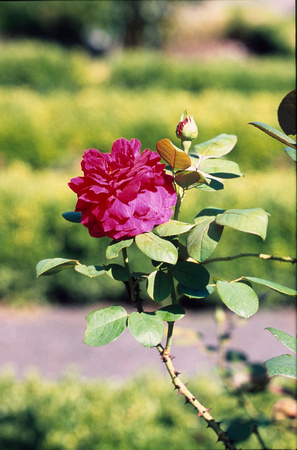

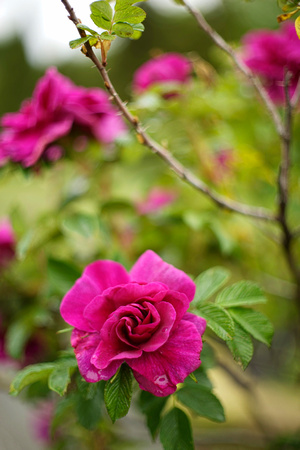

Left: Leica M3 with Fuji Provia 100F color slide film, Right: Digital Sony A7R, both with 50 mm lens
Left: Leica M6 with Rollei Infrared 400 B&W negative film with 25 mm lens, Right: Digital IR-converted Canon 5D MkII with 50 mm lens
Fall is a great time to go again with color - only this time yellow-orange/red tones will be dominant. Any vibrant color film will work here as well as digital. A great time in late fall also to take photos of sunrises/sunsets - I love taking those with Fuji Velvia 50 slide film. The film brings out orange/red colors in a very unique way, very different from other films and especially digital. ISO 50 allows longer exposure times and negligible grain. Best time also to take photos in the fog early in the morning - overexpose about one third or half a stop in this kind of scenes.
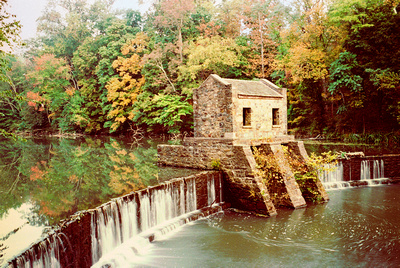



Left: Leica M3 with Fuji Provia 100F color slide film with 50 mm lens, Right: Digital Sony A7R with 21 mm lens
Left: Leica M7 with Kodak Porta 400 NC color slide film, Right: Digital Sony A7R, both with 35 mm lens. Circular polarizer was used in both cases.
Winter is clearly the best time for B&W photography but can also provide good opportunities for color. Snow will always make the reflective meter underexpose - make sure to overexpose scenes with snow on the ground at least half a stop or better one stop.
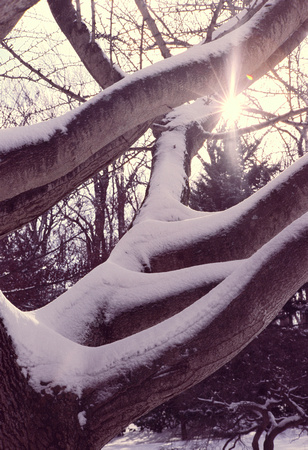

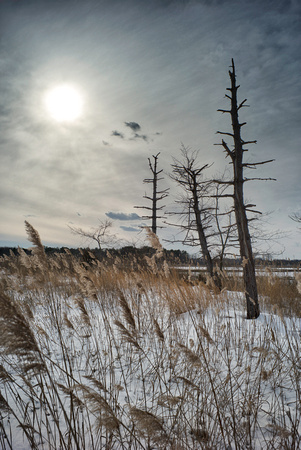

Left: Leica M3 with Kodak Ektachrome 100 color slide film with 50 mm lens, Right: Digital Leica M-E 240 with 28 mm lens
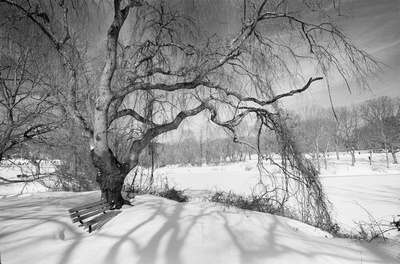

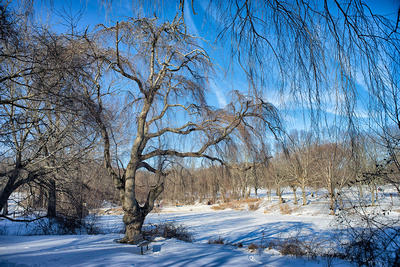

Left: Leica M6 with Kodak TMax 400 B&W negative film, Right: Digital Sony A7R, both with 21 mm lens
2. Events
I prefer taking photos of events with people present with lots of changing light situations - for example both outdoors and indoors - in B&W. Film is the more forgiving medium here due to its lower 35 mm film resolution compared to digital full frame format: in case the camera shakes a bit indoors at wider open aperture but with 1/15 sec, the photo will still look okay even if it is a bit blurry. With digital you have the option to go higher with ISO to avoid slow shutter speeds but only with Auto-ISO option in the camera - otherwise you likely will lose the moment when trying to change to higher ISO manually and doing the reverse when heading outdoors again. Clipped highlights in an indoor environment taken with digital are very common - but can be fully avoided with film. I am more focused on capturing a moment when using my 35 mm film camera whereas I feel more distracted by my digital camera to review the taken photo directly afterwards on the LCD camera screen.
Left: Leica M6 with Ilford FP4+ 125 film and 35 mm lens
3. Street Photography
All in for film here! In street photography, you need to be fast, and I often found it beneficial to take photos from my hip instead of wasting time to focus. Zone focusing is critical - best use a 35 mm manual focus lens between f/5.6-8.0. In sunny weather, an ISO 125 or 200 film suffices, in cloudy conditions definitely go with an ISO 400 film which can be pushed up to ISO 1600. This guarantees fast enough shutter time to take the shot with movement. The smaller and less conspicuous the camera, the better - best is a rangefinder camera which can be easily be seen as a modern Fuji mirrorless camera. There are many suitable digital camera options which are also preferred by street photographers - one is the Leica Q series - but the higher sensor resolution compared to film allows for less error margin while taking photos. And a bit of film grain make film street photos stand out from the rest, too!
Leica IIIc with Ilford FP4+ 125 B&W negative film and 35 mm lens
Leica M7 with Kodak Ektar 100 (left) and Kodak Porta 400 (right) color negative films, 28 mm lens
4. Portraits
Both media work well here - it comes down to personal choice. Digital offers the big advantage here to see directly after the shot if light, aperture, and exposure were selected correctly, or if something should be changed. Film keeps you in the dark until the film is developed - long after the subject has left the studio. For B&W portraits, I still prefer film over digital for reasons mentioned earlier. I might even use a larger format film camera to decrease depth-of-field and get for example the medium format look. But even with 35 mm and a faster lens, you can create some great artistic work in portraiture. You could try shooting both digital and film, but this takes more time - okay if you have a patient and understanding model. If you do it commercially, stick to digital here. The workflow is faster and more reliable. You can also show the customer the photos using the camera back with the screen.
Leica M6 with Kodak Ektar 100 color negative film (left) and Leica M7 with Ilford FP4+ 125 B&W negative film (right), 50 mm lens
5. Fine Arts
I prefer nearly 100% film when it comes to fine art photography. Why? Because I don't need to hurry here, it is mostly a static scene where I take either time to prepare the scene (still life) or walk the scene to find the right angle to a subject. Film helps me to be totally focused on the composition and immersing into the scenery. I select the surprise in the outcome on film over the gratification of success with digital. The simpler the better here from my experience. But it is a subjective feel - somebody else might just do as well with digital.
Leica M6 with different kind of B&W negative films and lenses between 21 to 50 mm
6. Decoration and Macro/Close-Up
Without doubt, do yourself a favor and do it digitally! Even I love film shooting, this is not the situation to use it - it will only lead to frustration. You better have an electronic viewfinder (EVF) to ensure correct focus applied before releasing the shutter. Film rangefinder cameras can normally only go down to 0.7 meters as minimum focus distance top the subject. With digital, there is no limit - with the right tools (for example diopter lens, extension tube, or macro lens) you can get as close as needed to the subject. It is a huge benefit over film. Since the focus is very shallow in macro photography, review the taken digital photos to determine if another shot should better be taken with improved focus.
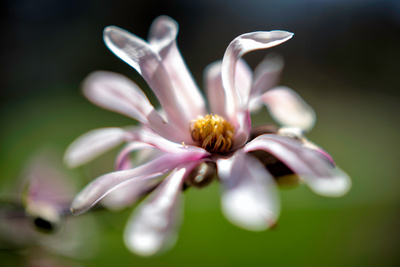



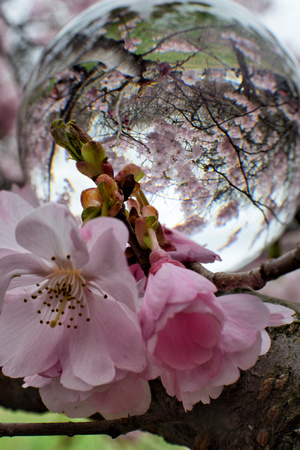

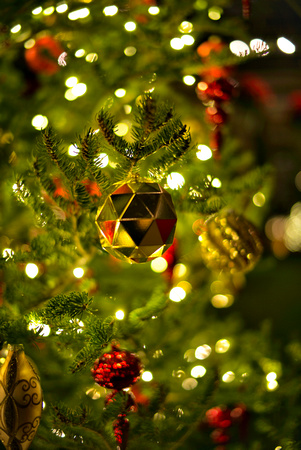

Digital close-up photos taken with Sony A7R (first three photos) and Leica M-E 240 with VF-2 (last photo)
7. Sports
I am not a sports photographer, but this is another area where film simply can't compete with digital. Formerly professional sports photographers were highly paid by magazines to take the fast photos needed in sports - everything had to be quick from taking the photo to the fastest possible development time for film. Nowadays even amateurs can take breathtaking sports photos with an average tele zoom lens. This is due to the improvement in digital cameras regarding shutter speed, shutter priority and Auto-ISO modes, image stabilization, and excellent AF capabilities. Any kind of film camera remains an underdog at best here.
Fishing with Leica M: TTArtisan 11/2.8 Fisheye M-Lens Review
Lurking to go wider in the field of view and adding creative impact into your photo composition? Then you might be thinking about a fisheye lens. Fisheye lenses in general come in different focal length versions according to the sensor size and to the desired field of view: 8 mm fisheye lenses for full-frame sensors provide a circular image whereas focal lengths between 11 to 15 mm keep the rectangular full-frame ratio but are more curved towards the borders of the frame. Fisheye lenses significantly differ from so-called rectlinear "standard" wide lenses where straight lines are excessively extended between 10 to 12 mm focal length but are never curved. Fisheye lenses often allow to get really close to the subject in the frame further emphasizing the "bubble" effect. It can lead to unusual but very creative photo compositions.
Before 2020, Leica M users were out of luck finding any M-mount based fisheye lens on the market: workarounds were necessary like adapting a SLR-based fisheye lens to any Leica camera. Assuming the (D)SLR lens had an aperture ring or was at least attached with fixed aperture to the camera, the photographer still had to estimate the field of view on a film camera or digital camera without display/EVF. Newer and better corrected fisheye lenses in general are also expensive - the Canon 8-15/4 EF fisheye lens still goes for approx. $1200. Attaching a larger SLR-based fisheye lens to a Leica M camera is quite a bit front-heavy setup.
Since a few years, several Chinese lens manufacturers are penetrating the M-lens market with better and better manual focus lens quality for very reasonable prices. The companies started out competing with high in demand Leica and Zeiss M-mount lenses. This strategy seems to work - the Chinese lens manufacturers started to add additional M lenses (and other MLC-based mounts) where they see a lack in the market. One Chinese company - TTArtisan - released a novel 11/2.8 fisheye lens in different mounts including the M-lens mount in 2020. the aperture of f/2.8 is fast for a fisheye lens - even more surprising was its fairly low introduction price of $215 for MLC mounts and $370 for the M-mount versions. The quite significant difference in price for the M-mount version remains sort of a mystery.
I recently ordered this lens - I haven't tested one of the newer Chinese M-lenses before, so this was my first Chinese M-lens. Honestly, I was sceptic thinking this is too good to be true and kept my expectations quite low. I found a good deal online for a mint version of this lens in M-mount which as bonus came together with the 11 mm external viewfinder (normally an accessory which needs to be purchased separately). For the amount of money I spent to purchase, I could easily resell it to give me peace of mind. So I gave it a try.
The lens arrived in a white cardboard box - inside is another beautiful white hard case plastic box with black printed lens group design of the 11/2.8 lens on top of it. The lens sits securely inside a beautiful red padding. As technical person it is hard to impress me just by an exterior look, but I admit I was very impressed by it. This is well designed and marketed - and c'on, not even Leica's latest Noctilux 50/1.2 version comes in a red padded box ;)! Next I took the lens out of the box and instantly felt the weight - but in a positive way. This lens is extremely well built only with metal housing and lots of glass elements - but still comes ins a fairly small size for the focal length and the fast aperture. The lens cap is another impressive feature - made of metal and sits tightly around the front lens. Aperture and focus rings move smoothly. The labels on the lens are in white or yellow color and easy to read. Clearly this lens is made to imitate the Leica look. And it achieves this! I became very curious about its optical performance after being so impressed by its built.
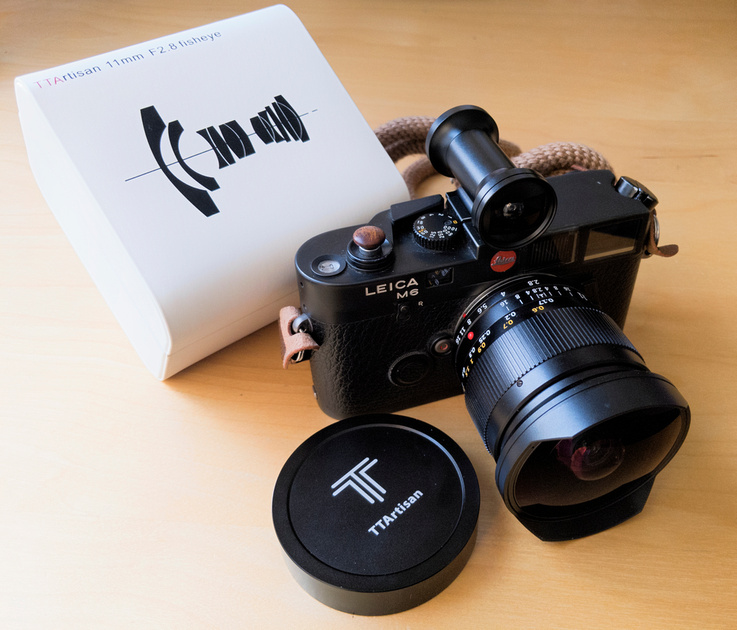

TTArtisan 11/2.8 M-lens with Leica M6 camera and external TTArtisan 11 mm viewfinder. The lens is delivered in a white plastic box including the lens design (behind camera).
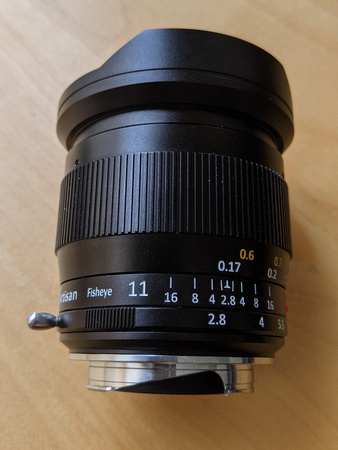

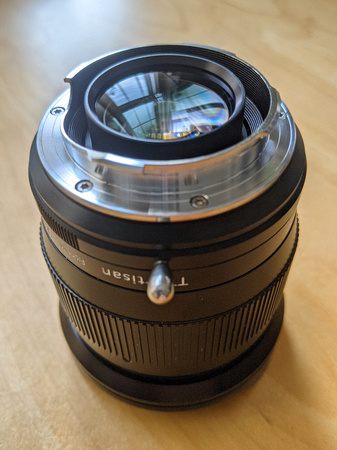

TTArtisan 11/2.8 M-lens from top with focus ring at MFD of 0.17 m and metal focus tab for the aperture ring (left). The back of the lens shows the M-mount with protruding back lens element (right).
First I attached this lens to my digital M-E 240 camera which I used for testing with the hotshoe-based VF-2 EVF. This way I wanted to make sure that I nail the focus to determine image sharpness by looking through the EVF. Since the lens is not rangefinder-coupled, I had to manually press the camera's focus button to magnify the focus image when moving the lens focus ring. I ventured outdoors on a cold winter day to take a couple first ultrawide photos of boats and a forklift nearby. I took them wide open at f/2.8 and stopped down to f/5.6, also at close focus about 0.17 m and more than one meter distance. I was impressed by looking at the EVF screen with my first results. Later I reviewed both the DNG and JPG files on my large monitor screen only confirming my initial impression. Not only is this lens very sharp wide open in the center, it provides a fantastic out-of-focus blur of the background. It is something I did not expect from a f/2.8 lens. This kind of blur I am used to see with faster f/1.4 lenses normally. Difference is that this fisheye lens does not show bokeh circles often - instead it blurs out image parts in a painterly smooth way. I would describe it as 3D effect which this lens provides wide open. Stopped down, the corner-to-corner sharpness improves significantly and is already very good at f/5.6. Aperture f/5.6 is a good choice to keep the viewer's eye focused on the extended main part of the image but leaving infinity background a bit blurry. At f/8.0, all image elements are super sharp including the corners of the frame. I observed some very slight blue and greenish chromatic aberration far out in the corners against the light source when magnified to 200% - easily to be corrected in post-processing. And honestly, this is normal for any kind of such ultrawide fisheye lens and nothing to worry about. Not much post-processing had to be done with the photos - just adding a bit contrast and saturation which I normally do with digital files anyway no matter which lens I am using.
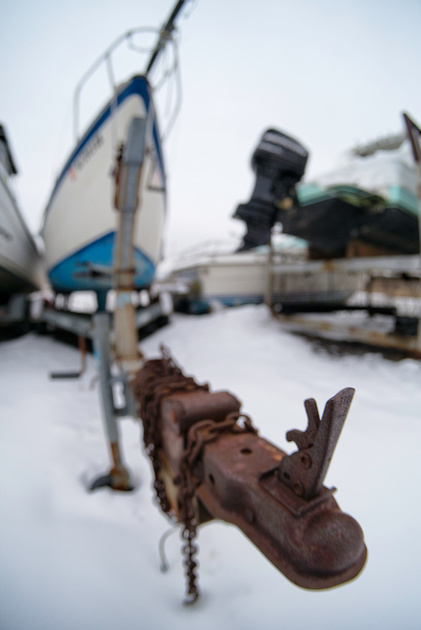

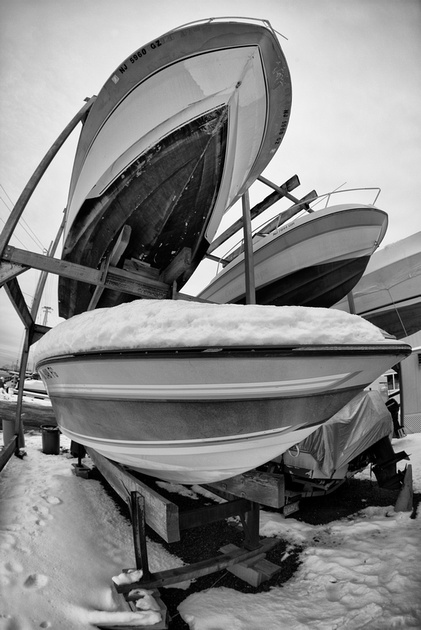

TTArtisan 11/2.8 M-lens with Leica M-E 240 camera: wide open at f/2.8 (left) and stopped down to f/5.6 (right)
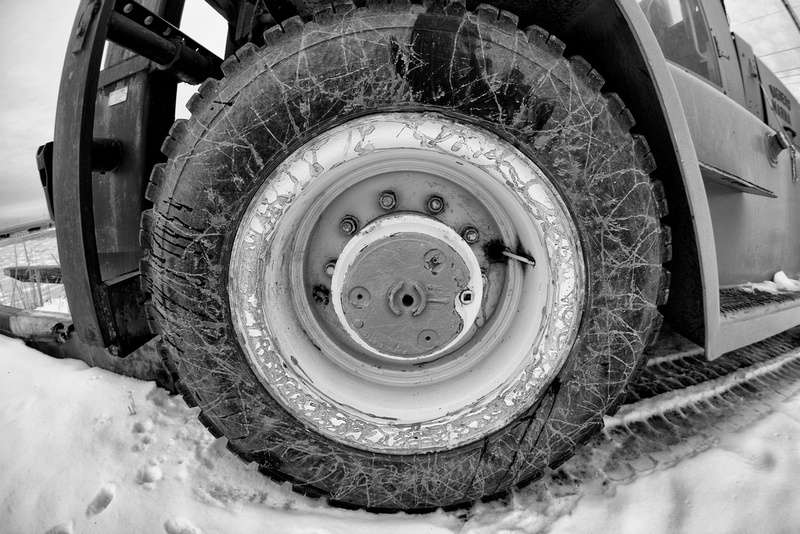

The 180 deg field of view and getting close to the tire in the photo above includes the tracks in the snow behind it. Monochrome digital photo taken at f/4.0
The M-mount version comes with a handy metal aperture ring tab which other MLC mount versions don't seem to have. I am normally not a big fan of tabs, but here it is really helpful. The aperture ring is slim, and the tab allows easy handling. What I found as debit during practical use in this lens' construction is the lack of aperture click stops. By having the camera dangling from my neck, I found that the aperture ring started after a while moving on its own forcing me to check my aperture setting before taking another photo. No aperture click-stops might be beneficial for video usage though. The focus ring has a good size and moves easily. Using this lens in colder outdoor temperature stiffened a bit the movement of the focus ring. No concern but I could clearly tell the difference. The required movement of the focus ring is longer at minimum focus distance (MFD) - allowing better precision focus at close-up distance.
Lack of rangefinder focus coupling worried me first, but I learned quickly that it is not needed with this lens. This can be easily performed by zone focusing to one meter or infinity and a mid-size choice of aperture. More critical focus is needed for distances below 0.5 m - and rangefinder focusing doesn't work anyway below 0.7 m! Here either EVF/LiveView is required for best accurate focusing, or a good estimate. I figured that the MFD of this lens at 0.17 m is just about a hand length of mine - so I estimated quite well the distance between subject and lens with my hand at MFD and then released the shutter. This method proved very useful with film and using a wider lens aperture.
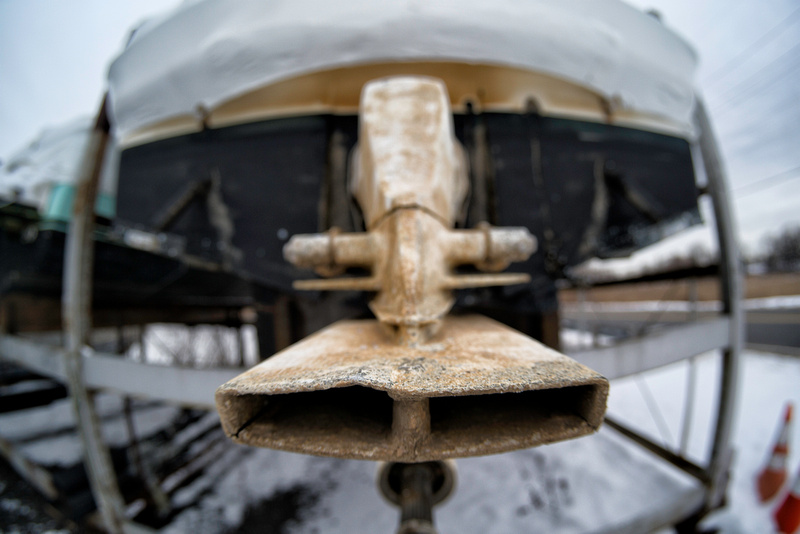

Best close-up focus can be obtained with EVF or LiveView display. Taken with M-E 240 camera and VF-2 EVF at f/2.8.
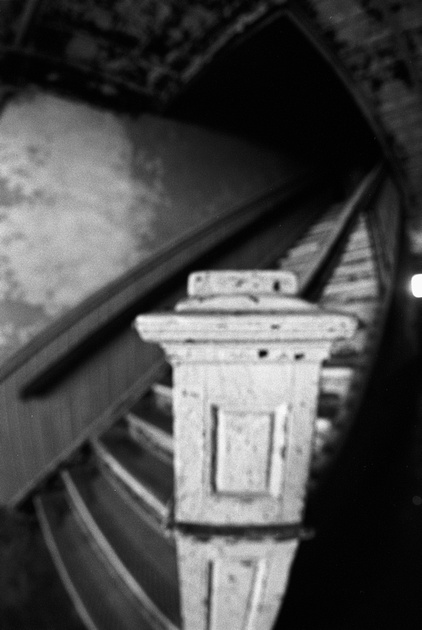

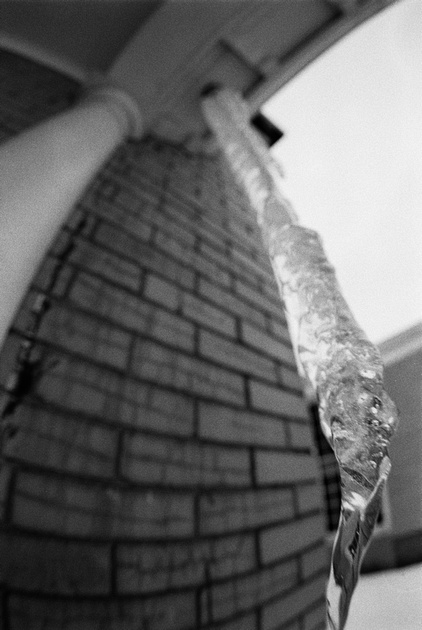

Accurate close-focusing can be challenging at times without EVF or LiveView display as in these two cases above taken with my Leica M6 film camera and 11 mm external viewfinder mounted on the hotshoe. Closest focus distance is about 17 cm which corresponds to about a hand length. Still a bit out of focus (left) at f/2.8, stopping down makes it easier to focus accurately at f/4.0 (right).
After seeing this lens' performance on digital in color, I was curious to see it performing on film - especially B&W film. Main reason was also to test the 11 mm external TTArtisan viewfinder which I received together with the lens but which is normally an accessory to purchase separately. The 11 mm viewfinder is also fully made of metal with glass element(s) inside representing the ultrawide 11 mm view. The hotshoe mount sits well on my Leica M6 but loosened itself once in the camera bag and fell off. Reason for this is that the viewfinder mount doesn't fully insert onto the M6 camera's hotshoe mount - it hits the pin on the mount and sits a couple mm short of inserting fully on the hotshoe plate. This does not affect functionality though - The external viewfinder is quite long with > 5 cm in length. I personally like that the lens element to look through is protruded inside the barrel, so you will never touch and smear it. The shown view fits very well to the one in the final photograph. It is a great tool to compose with especially on film cameras. To me it has become quickly a must-have accessory in combination with this lens. I also tested if this viewfinder could be used to resemble the 12 mm view of my Voigtlander 12/5.6 M-mount rectlinear lens - but the 1 mm difference in focal length makes a big difference in frame size! This means the 11 mm viewfinder remains dedicated to this one lens only.


TTArtisan 11/2.8 M- lens with Leica M6 and Ilford FP4+ 125 film: fisheye landscape photos compress some elements and stretch others out at the same time. The curved horizontal line with the houses adds uniqueness to the image. Taken at f/8.0.
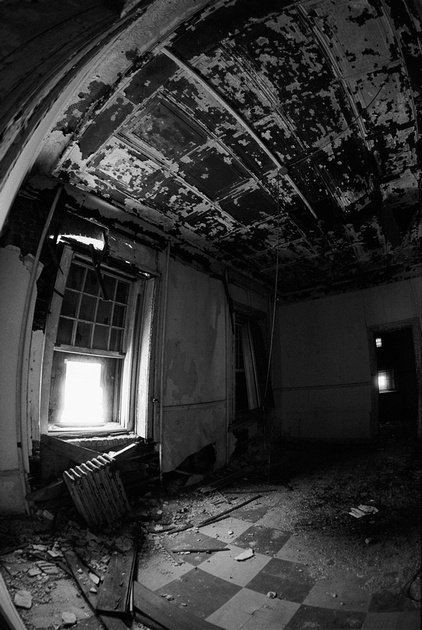

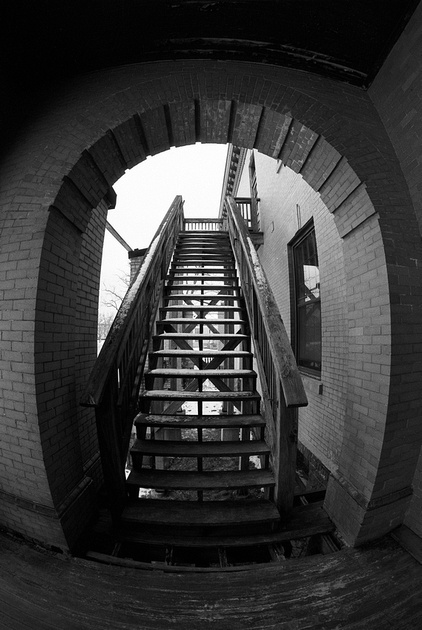

Lens curvature with this fisheye lens can add drama and show common forms from a different perspective. Film photos taken at f/2.8 (left) and f/5.6 (right)


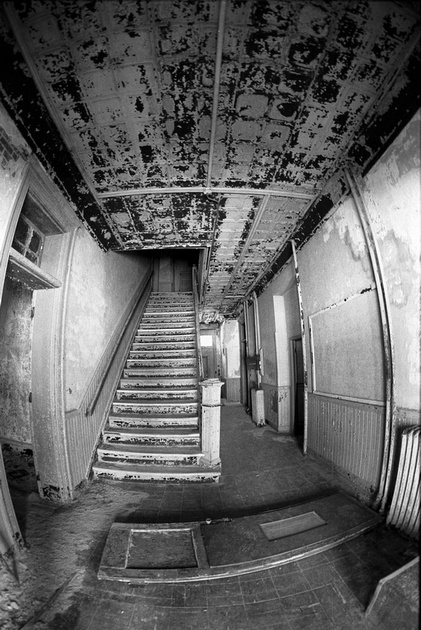

Low light performance of the TTArtisan 11/2.8 lens is very good. The film photos were taken handheld at f/2.8 and 1/8 sec exposure time with ISO 125 film.
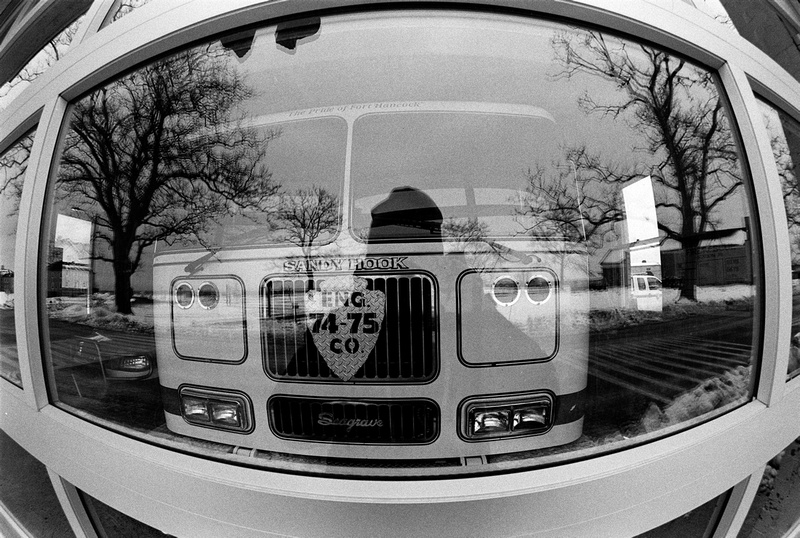

The lens allows for very close focusing distance - It was only a hand length apart from the window. The lens has a 180 degree field of view. Film photo taken at f/8.0
My film photos using the TTArtisan 11/2.8 lens fell nothing short of coming out perfect. I only lost a few frames when estimating the focus at closer focus distance wrongly. Here clearly digital with EVF is the much easier choice which guarantees accurate focus. But zone focusing at 0.5 meters up to infinity turned out well at different apertures. I found myself this day in a situation shooting indoors in dim light - f/2.8 was just right with my ISO 125 film and 1/8 sec exposure time to get the handheld shots (I was never able to get sharp photos at 1/8 sec with my (D)SLRs but it is doable with my rangefinder cameras!). The lens is fairly flare resistant - I used it with light sources in the center and one the side and didn't see any flares or undesired reflections.
The lens makes your brain work a bit harder and also be more creative in your compositions. You can't use this lens like any other rectlinear lens - if you do, all you get are boring and/or too distorted lines in the image. I found it key to get close with this fisheye lens - much more dramatic compositions are possible this way. This lens combines fisheye with close-up features which makes it even more interesting. Often I found myself in shooting from low ground upwards with this lens to increase dramatic view in the composition. The lens can be used for indoor shots with creative input - for example closer objects on the side of the 11 mm fisheye view appear bigger than they are, and objects which are in the center appear less distorted but smaller. There are ways to remove the typical curved fisheye distortion from the image yielding in a rectlinear look-alike. But where is the fun with this? If I want straight lines, I would rather grab my Voigtlander 12/5.6 lens instead. When shooting fisheye, I embrace the distortions!
I quickly decided that this lens is a keeper lens for me! It is very unique and is optically IMO miles better than what you would expect from the lens price. That it comes with f/2.8 stop is an additional benefit for low light situations, great for shallow depth of field effects, and when shooting with film. I mentioned earlier the price difference of this lens in different mounts with M-mount being the significantly more expensive one. Since the flange distance of rangefinder camera is smallest, likely some difference placing the lens groups into the corresponding lens housing helps to overcome potential culprits with rangefinder cameras. Some additional extra feature like the aperture tab adds to the increased price for the M-lens - other than potential higher demand for the M-mount lens in the first place. This being my first experience with a Chinese M-mount lens, I am actually curious now about others they have in their program.
I summarized my main findings in bullet points below, but the cons are minor issues which shouldn't stop anybody going for this lens.
Pros
+ Extremely well built lens with metal body delivered in a beautiful padded box
+ Still compact lens size for the f/2.8 aperture speed and the number of lens elements used
+ Well-made metal lens cap which sits securely on the front lens
+ High optical quality of the lens
+ Manual focus ring allows for accurate focusing at closer focus distances
+ Painterly 3D effect wide open and with close focus subject
+ Suitable to shoot in dark environments wide open
+ Aperture metal tab on otherwise slim ring
+ 11 mm External viewfinder available as accessory
+ Excellent price/quality ratio
Cons:
- No aperture click-stops: aperture ring can accidentally move on its own while carrying the camera
- No rangefinder focus coupling even it is not really needed with this lens. But It would be a nice-to-have!
- Stiffer lens movements (aperture and focus rings) in cold temperatures
- 11 mm External viewfinder doesn't fully insert into the Leica M6 hotshoe making it a bit loose (but not severely, it won't fall off easily)
- No paper manual provided - only a card with links to the TTArtisan website (no manual there either!). But who reads lens manuals?!
- M-lens mount of this lens is much more expensive than other MLC-based mounts
